Related Research Articles

The Warsaw Ghetto was the largest of the Nazi ghettos during World War II and the Holocaust. It was established in November 1940 by the German authorities within the new General Government territory of occupied Poland. At its height, as many as 460,000 Jews were imprisoned there, in an area of 3.4 km2 (1.3 sq mi), with an average of 9.2 persons per room, barely subsisting on meager food rations. Jews were deported from the Warsaw Ghetto to Nazi concentration camps and mass-killing centers. In the summer of 1942, at least 254,000 ghetto residents were sent to the Treblinka extermination camp during Großaktion Warschau under the guise of "resettlement in the East" over the course of the summer. The ghetto was demolished by the Germans in May 1943 after the Warsaw Ghetto Uprising had temporarily halted the deportations. The total death toll among the prisoners of the ghetto is estimated to be at least 300,000 killed by bullet or gas, combined with 92,000 victims of starvation and related diseases, the Warsaw Ghetto Uprising, and the casualties of the final destruction of the ghetto.

Shoah is a 1985 French documentary film about the Holocaust, directed by Claude Lanzmann. Over nine hours long and 11 years in the making, the film presents Lanzmann's interviews with survivors, witnesses and perpetrators during visits to German Holocaust sites across Poland, including extermination camps.
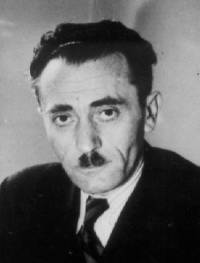
Szmul Mordko Zygielbojm was a Polish socialist politician, Bund trade-union activist, and member of the National Council of the Polish government-in-exile.
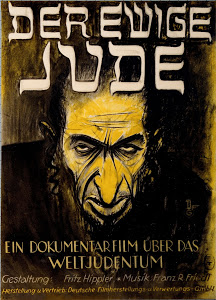
The Eternal Jew is a 1940 antisemitic Nazi propaganda film, presented as a documentary. The film's initial German title was Der ewige Jude, the German term for the character of the "Wandering Jew" in medieval folklore. The film was directed by Fritz Hippler at the insistence of Nazi Germany's Minister of Propaganda, Joseph Goebbels.
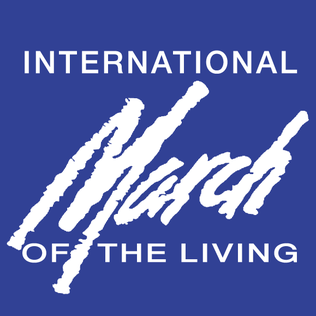
The March of the Living is an annual educational program which brings students from around the world to Poland, where they explore the remnants of the Holocaust. On Holocaust Memorial Day observed in the Jewish calendar, thousands of participants march silently from Auschwitz to Birkenau.

A nature documentary or wildlife documentary is a genre of documentary film or series about animals, plants, or other non-human living creatures. Nature documentaries usually concentrate on video taken in the subject's natural habitat, but often including footage of trained and captive animals, too. Sometimes they are about wildlife or ecosystems in relationship to human beings. Such programmes are most frequently made for television, particularly for public broadcasting channels, but some are also made for the cinema. The proliferation of this genre occurred almost simultaneously alongside the production of similar television series which is distributed across the world.
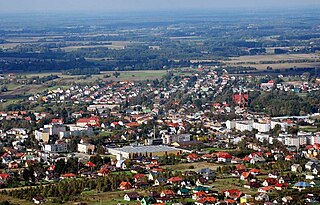
Nasielsk is a small town in Masovian Voivodeship, Poland. It is located approximately 50 kilometres (31 mi) north of the Polish capital Warsaw, on the Warsaw-Gdańsk rail line and serves as a railway junction. In 2020, the population of the town was estimated at 7,650 residents.

Kałuszyn is a town in Poland, seat of the Gmina Kałuszyn (commune) in Mińsk County in Masovian Voivodeship.

Theresienstadt. Ein Dokumentarfilm aus dem jüdischen Siedlungsgebiet, unofficially Der Führer schenkt den Juden eine Stadt, was a black-and-white projected Nazi propaganda film. It was directed by the German Jewish prisoner Kurt Gerron and the Czech filmmaker Karel Pečený under close SS supervision in the Theresienstadt concentration camp, and edited by Pečený's company, Aktualita. Filmed mostly in the autumn of 1944, it was completed on 28 March 1945 and screened privately four times. After the war, the film was lost but about twenty minutes of footage was later rediscovered in various archives.

Rut "Rutka" Laskier was a Jewish Polish diarist who is best known for her 1943 diary chronicling the three months of her life during the Holocaust in Poland. She was murdered at Auschwitz concentration camp in 1943 at the age of fourteen. Her manuscript, authenticated by Holocaust scholars and survivors, was published in the Polish language in early 2006. English and Hebrew translations were released the following year. It has been compared to the diary of Anne Frank.
Josh Appignanesi is a British film director, producer, and screenwriter. Appignanesi is best known for the feature film Song of Songs (2006), starring Natalie Press, which he directed, co-wrote and co-produced. The film won several awards including a special commendation for Best British Film at the Edinburgh Film Festival. Made on a tiny budget, the film is a dark study of the intense relationship between a brother and highly religious sister in London's Orthodox Jewish community. The film had a small, arthouse UK release but received critical acclaim; The Observer said it "reveals a distinctive and bold new voice in British cinema." He has written and directed several short films, most notably Ex Memoria (2006) which also stars Natalie Press as well as Sara Kestelman in a study of a woman with Alzheimer's disease, funded by the Wellcome Trust; and Nine 1/2 Minutes (2003), a romantic comedy starring David Tennant.
The Story of Chaim Rumkowski and the Jews of Łódź is a 1982 documentary film that uses archival film footage and photographs to narrate the story of one of the Holocaust's most controversial figures, Chaim Rumkowski, a Jew put in charge of the Łódź ghetto by the German occupation authorities during World War II.

Glenn Kurtz is an American writer and the author of Practicing: A Musician's Return to Music.

Tarłów is a village in Opatów County, Świętokrzyskie Voivodeship, in south-central Poland. It is the seat of the gmina called Gmina Tarłów. It lies approximately 30 kilometres (19 mi) north-east of Opatów and 79 km (49 mi) east of the regional capital Kielce. It is approximately 13 kilometres (8 mi) north of the town of Ozarow. The village belongs to historic province of Lesser Poland.
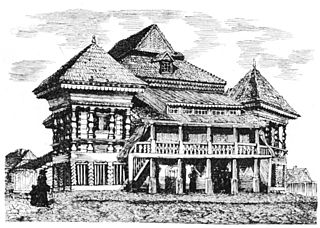
The Nasielsk Synagogue was a notable vernacular wooden synagogue in Nasielsk, Poland. It was built in the late 17th century or early 18th century by Simcha Weiss, son of Shlomo of Luck. The deteriorating synagogue was demolished in 1880.

The Jewish history of Adamów at the Łuków County dates back as recent as 1827. By then, more than 100 Jews lived in town, meaning the Jewish community might existed long before. During the holocaust, the entire Jewish community of the town was annihilated, resulting in the disappearance of any Jewish existence in town ever since.
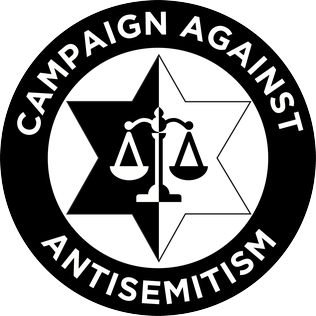
Campaign Against Antisemitism (CAA) is a British non-governmental organisation established in August 2014 by members of the Anglo-Jewish community. It publishes research, organises rallies and petitions, and conducts litigation.
Renia Spiegel was a Jewish-Polish diarist who was killed during World War II in the Holocaust.
Bianca Stigter, Lady McQueen is a Dutch film director from Amsterdam. She directed Three Minutes: A Lengthening.
Luke Holland (1948–2020) was an English photographer and documentary filmmaker, best known for the film Final Account.
References
- ↑ Brady, Tara (2 December 2022). "Three Minutes: A Lengthening – Snatches of home-movie footage, then a detective story unfolds". The Irish Times . Retrieved 5 February 2023.
- 1 2 Applebaum, Stephen (1 December 2022). "A Jewish community frozen on the eve of destruction". The Jewish Chronicle . Retrieved 5 February 2023.
- 1 2 Aderet, Ofer (31 May 2022). "Nearly Lost Footage Shows Polish Town Before It Was Obliterated in the Holocaust". Haaretz . Retrieved 5 February 2023.
- 1 2 Siegal, Nina (3 January 2022). "A Film Captures Jewish Life in a Polish Town Before the Nazis Arrived". The New York Times . ISSN 0362-4331 . Retrieved 5 February 2023.
- 1 2 3 Bradshaw, Peter (30 November 2022). "Three Minutes: A Lengthening review – fragments of a Jewish town destroyed by war". The Guardian . ISSN 0261-3077 . Retrieved 5 February 2023.
- ↑ Freedland, Jonathan (24 November 2022). "'A small victory against erasure': the three minutes that bring an exterminated Jewish past to life". The Guardian . ISSN 0261-3077 . Retrieved 5 February 2023.
- ↑ Nicholson, Rebecca (24 January 2023). "Three Minutes: A Lengthening review – Helena Bonham Carter is profoundly poetic in an astounding documentary". The Guardian . ISSN 0261-3077 . Retrieved 5 February 2023.
- ↑ "Three Minutes – A Lengthening", Rotten Tomatoes , retrieved 5 February 2023
- ↑ "BBC to mark Holocaust Memorial Day with three new documentaries". BBC . 9 January 2023. Retrieved 5 February 2023.
- ↑ "Storyville - Three Minutes: A Lengthening".